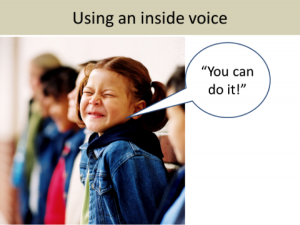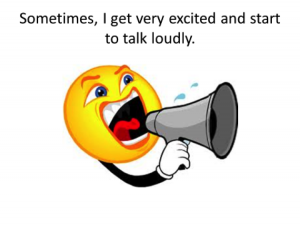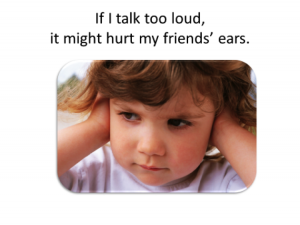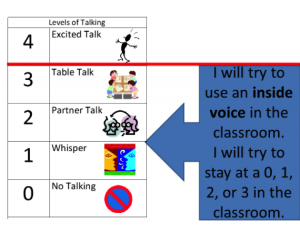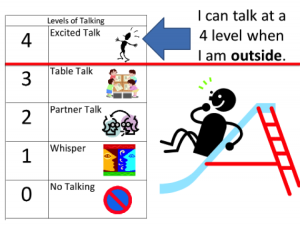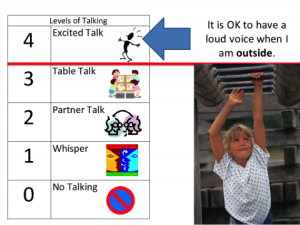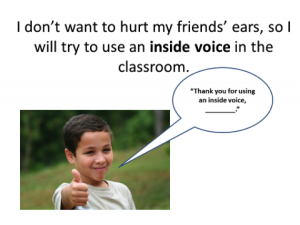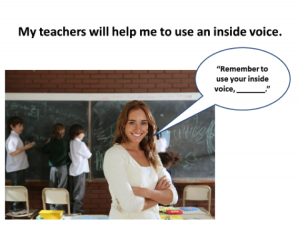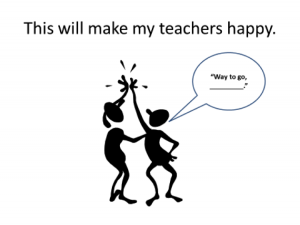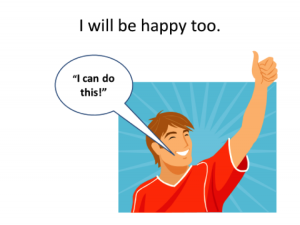Although sensory differences are very real and must be recognized as such, narratives can help to deal with these differences. For instance, there was a high school student that was having significant difficulty with the hallway transition from class to class. Not only was there the loud bell that signals the transition, but then it was followed by a crowded hallway and noisy teenagers talking in groups.
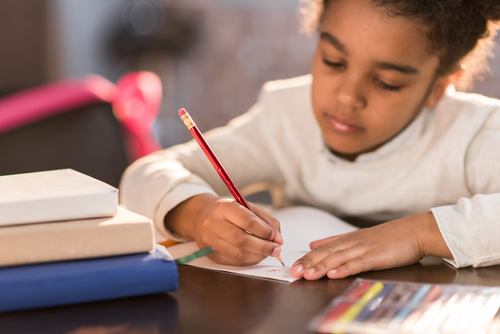
One way to address this might be to allow an early release from class to avoid much of this hallway chaos. Another option is to provide a narrative that helps deal with this difficult transition.
The following is an example of such a narrative:
Passing Period at High School
My name is ___________. I am a student at _________ High School.
In High School, there are different periods. A bell rings at the end of each period.
When the bell rings, the students walk in the hall to go to their next class.
Sometimes, the students make a lot of noise as they walk down the hallway. This might hurt my ears.
That is O.K. The passing period lasts only for a few minutes. Soon, the halls will be quiet again.
I remember that I can just wear my headphones & listen to music during the passing period.
Then, I will get to walk to my next class where it is nice and quiet.
I can do this!
Staff noticed that the student would repeat the story to himself while walking down the hall. A narrative can validate feelings, provide a solution and even offer comfort during a stressful time.
The following is another example of a narrative addressing sensory issues. This time, the narrative was written for a student that wanted to hug her classmates frequently and deeply to get that deep pressure feeling.
Being a Good Friend
My name is ________ and I am in the ________ grade at __________ elementary.
I work very hard and try to listen to the teacher.
I love all different colors. My favorite color is pink. This makes me happy.
I have good friends at school.
I can shake hands with my friends.
I can shake hands with my teachers.
I can even give a side hug if that is O.K with them.
I will ask first.
I can do this! The end . . . my friend.
And yet another way to use narratives is to help students that might contribute to the situation to adjust their own behavior to help a friend that might have auditory sensitivity.
The following narrative is written using a PowerPoint format so that it can be projected for the class and printed out for immediate reference.
by Lisa Rogers
The Education (K-12) Blogs and Special Ed Q & A are written and maintained weekly by Lisa Rogers with Educating Diverse Learners. Lisa received her M.A. in Special Education with an endorsement in the area of individuals with severe disabilities. Mrs. Rogers has also created products that have been used throughout the state of Texas for training purposes. Through the Association for Texas Professional Educators [ATPE], Ms. Rogers has produced an online course that targets the importance of visual strategies for student with autism spectrum disorders and just released her highly anticipated book titled: Visual Supports for Visual Thinkers.

